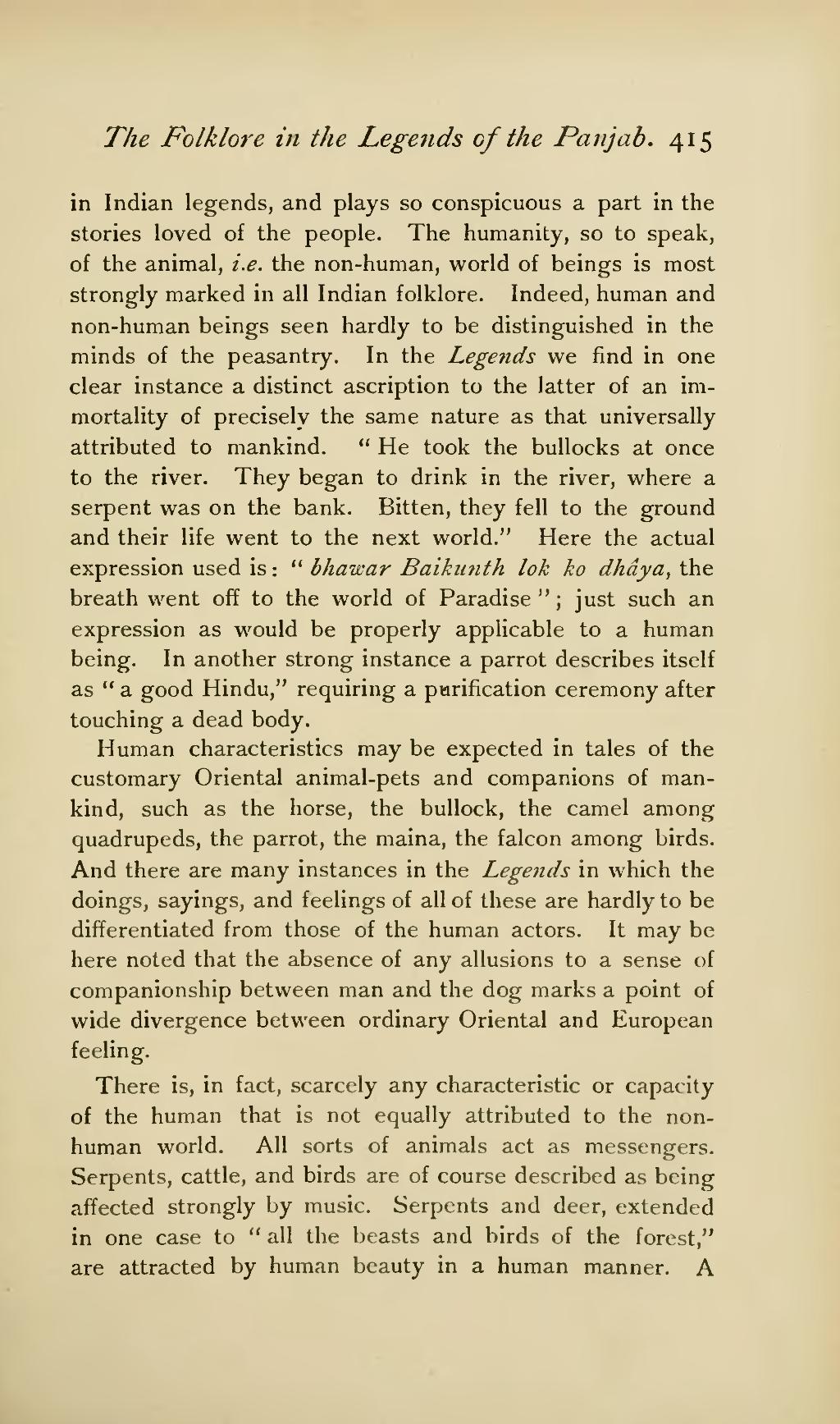in Indian legends, and plays so conspicuous a part in the stories loved of the people. The humanity, so to speak, of the animal, i.e. the non-human, world of beings is most strongly marked in all Indian folklore. Indeed, human and non-human beings seen hardly to be distinguished in the minds of the peasantry. In the Legends we find in one clear instance a distinct ascription to the latter of an immortality of precisely the same nature as that universally attributed to mankind. "He took the bullocks at once to the river. They began to drink in the river, where a serpent was on the bank. Bitten, they fell to the ground and their life went to the next world." Here the actual expression used is: "bhawar Baikunth lok ko dhâya, the breath went off to the world of Paradise"; just such an expression as would be properly applicable to a human being. In another strong instance a parrot describes itself as "a good Hindu," requiring a purification ceremony after touching a dead body.
Human characteristics may be expected in tales of the customary Oriental animal-pets and companions of mankind, such as the horse, the bullock, the camel among quadrupeds, the parrot, the maina, the falcon among birds. And there are many instances in the Legends in which the doings, sayings, and feelings of all of these are hardly to be differentiated from those of the human actors. It may be here noted that the absence of any allusions to a sense of companionship between man and the dog marks a point of wide divergence between ordinary Oriental and European feeling.
There is, in fact, scarcely any characteristic or capacity of the human that is not equally attributed to the nonhuman world. All sorts of animals act as messengers. Serpents, cattle, and birds are of course described as being affected strongly by music. Serpents and deer, extended in one case to "all the beasts and birds of the forest," are attracted by human beauty in a human manner. A
